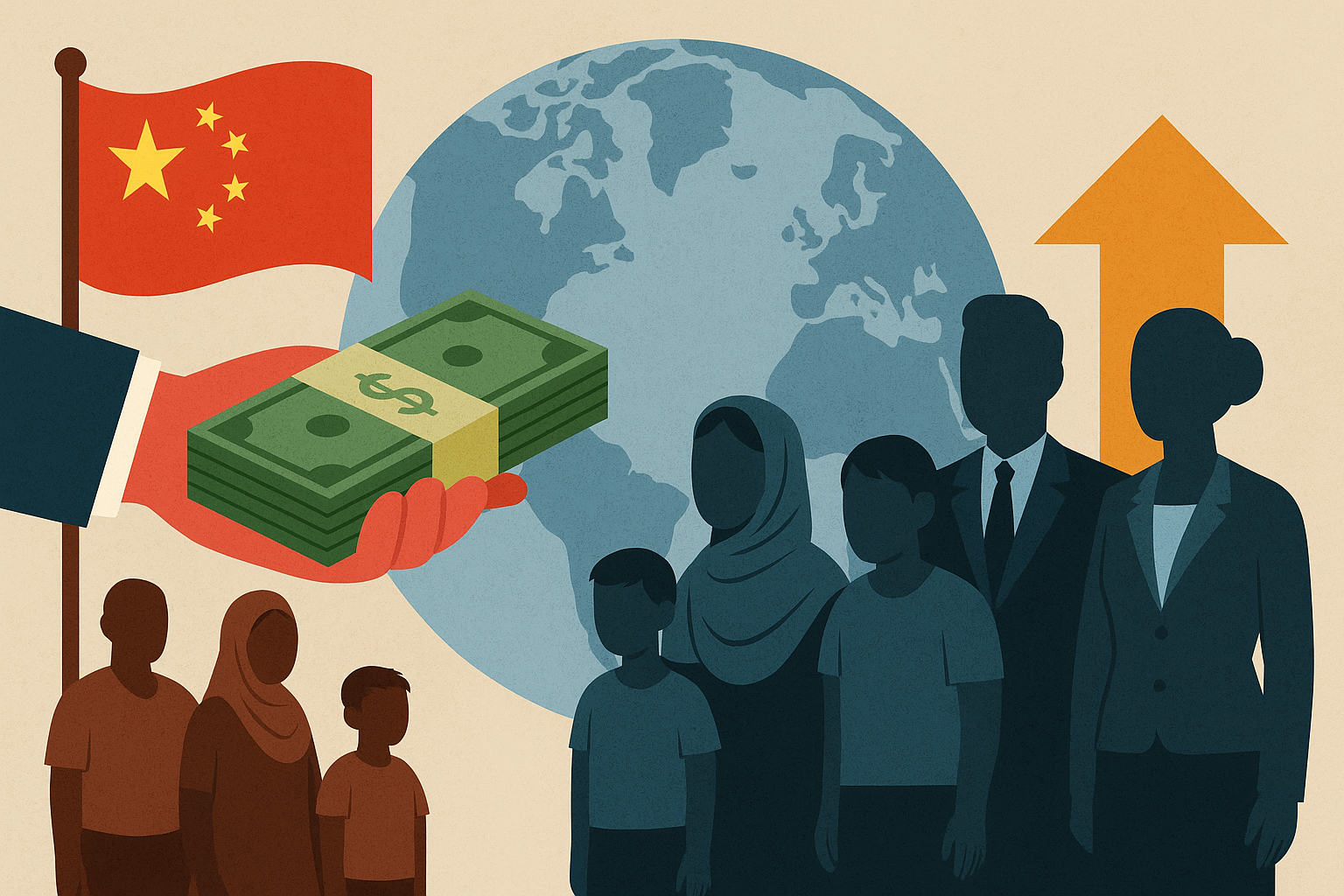Poor Countries Got $1 Trillion from China — And So Did Rich Ones
Times Of India

1. Introduction and Context
This article analyses China’s global lending behaviour and the misconception that Beijing lends primarily to poor, developing nations through initiatives like the Belt and Road Initiative (BRI).
Using new data, the article reveals that rich industrialised countries and Western corporations have also borrowed over $200 billion from Chinese banks — indicating that China’s financial influence now penetrates both developing and developed worlds.
The discussion centres on the global spread of Chinese credit, strategic leverage, geopolitical implications, and how Western economies are increasingly becoming financially entangled with China.
2. Key Arguments Presented
a. China has become the world’s largest official lender
- Over $1 trillion issued globally through China Development Bank and Exim Bank.
- Lending extends across Asia, Africa, Latin America, Europe, and North America.
b. The largest borrower is not Africa — but the United States
- Over $800 billion lent to U.S. corporations and projects.
- Recipients include Tesla, Disney, Amazon, university funds, and infrastructure projects.
c. China lends to Western firms in sensitive and strategic sectors
- Loans linked to acquisitions in health, tech, and semiconductors.
- Chinese entities use credit to influence or pressure U.S. companies operating in China.
d. High-income countries borrow from China for economic reasons
- Lower interest rates
- Faster access to capital
- China’s deep liquidity
China uses this financial dependence to secure strategic influence and supply chain advantages.
e. Rich countries face the same debt exposure risks as poorer nations
- Western nations underestimate the geopolitical implications of their reliance on Chinese lending.
- Even market-rate loans carry potential influence and long-term vulnerability.
3. Author’s Stance
The stance is analytical and cautionary.
The author argues that:
- China’s lending is broader and more strategic than commonly believed.
- Western nations are increasingly dependent on Chinese capital.
- Both developing and developed nations face hidden strategic risks.
Tone: Investigative, critical, and geopolitically alert — without being alarmist.
4. Biases and Limitations
a. US-centric perspective
Heavy reliance on Western think tanks and U.S. data sources.
b. Overemphasis on geopolitical motives
Commercial motivations behind Chinese lending receive less attention.
c. Limited exploration of borrower benefits
Positive outcomes for Western companies or developing nations are not adequately discussed.
d. Dependence on AdData
Single-source reliance may reduce nuance.
5. Pros and Cons of China’s Lending Model
Pros
- Quick capital for infrastructure and development.
- Alternative to IMF/World Bank norms.
- Supports high-risk sectors.
- Helps Western companies expand or survive liquidity crunches.
- Strengthens global connectivity.
Cons
- Creates long-term political and financial dependency.
- Potential exposure of sensitive sectors (technology, health).
- Transparency concerns.
- Can worsen debt crises in vulnerable economies.
- Offers China leverage in global supply chains.
6. Policy Implications
a. For Developing Countries
- Need stronger debt sustainability frameworks.
- Diversify financing sources.
- Strengthen loan transparency and accountability.
b. For Developed Countries
- Screening mechanisms for foreign capital in critical sectors.
- Regulation similar to CFIUS for national security.
- Re-evaluation of Chinese financial penetration.
c. For India
- Understand Chinese “financial diplomacy” to design alternatives.
- Strengthen domestic manufacturing and supply chains.
- Build South–South financing partnerships.
d. For Global Governance
- IMF, World Bank, and G20 must reform lending processes.
- Democratic countries need coordinated financial alternatives to China.
7. Real-World Impact
Economic
China reshapes global capital flows and becomes central to liquidity markets.
Strategic
Lending evolves into a tool of power and long-term influence.
Diplomatic
Borrowing nations may shift geopolitical alignments based on financial dependency.
Corporate
Western companies gain short-term benefits but face long-term vulnerabilities.
8. UPSC GS Alignment
GS Paper 1:
Globalisation, economic interdependence.
GS Paper 2:
China’s foreign policy
India–China relations
Global governance
GS Paper 3:
Foreign capital flows
Debt crisis
Economic and national security
Supply chain vulnerabilities
GS Paper 4:
Ethics of international lending
Transparency, accountability, fairness in financial diplomacy
9. Conclusion and Future Perspectives
China’s global lending is not confined to developing countries — it now deeply permeates Western economies, reshaping the global financial order.
This challenges traditional assumptions about debt dependency and underscores how financial power is becoming central to geopolitical influence.
Going forward, the global trajectory will depend on:
- China’s economic strength
- Western regulatory responses
- Global alternatives to Chinese credit
- Rising concerns around strategic debt exposure
The article is a timely reminder that financial dependence today is a major driver of geopolitical relationships, affecting both rich and poor nations alike.
